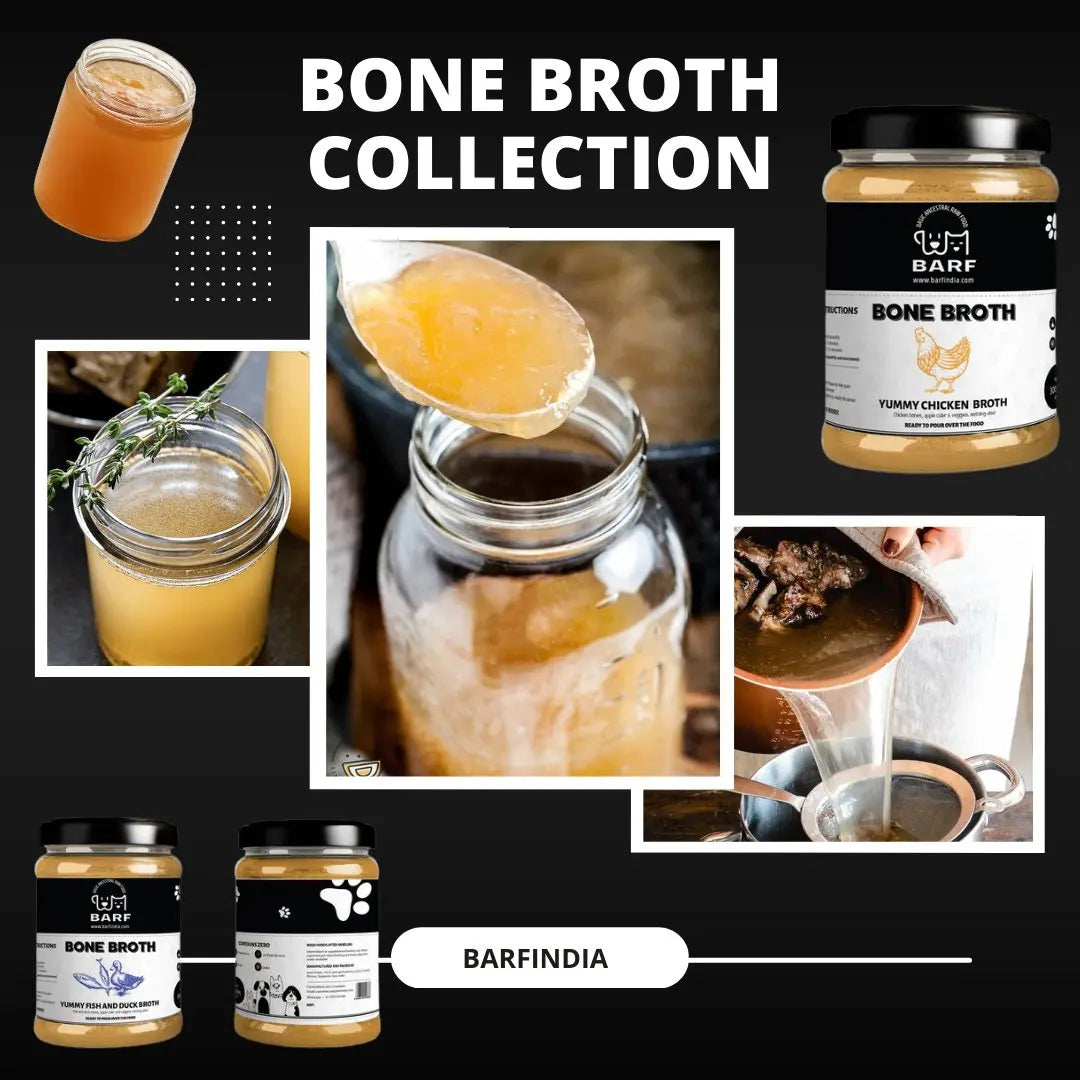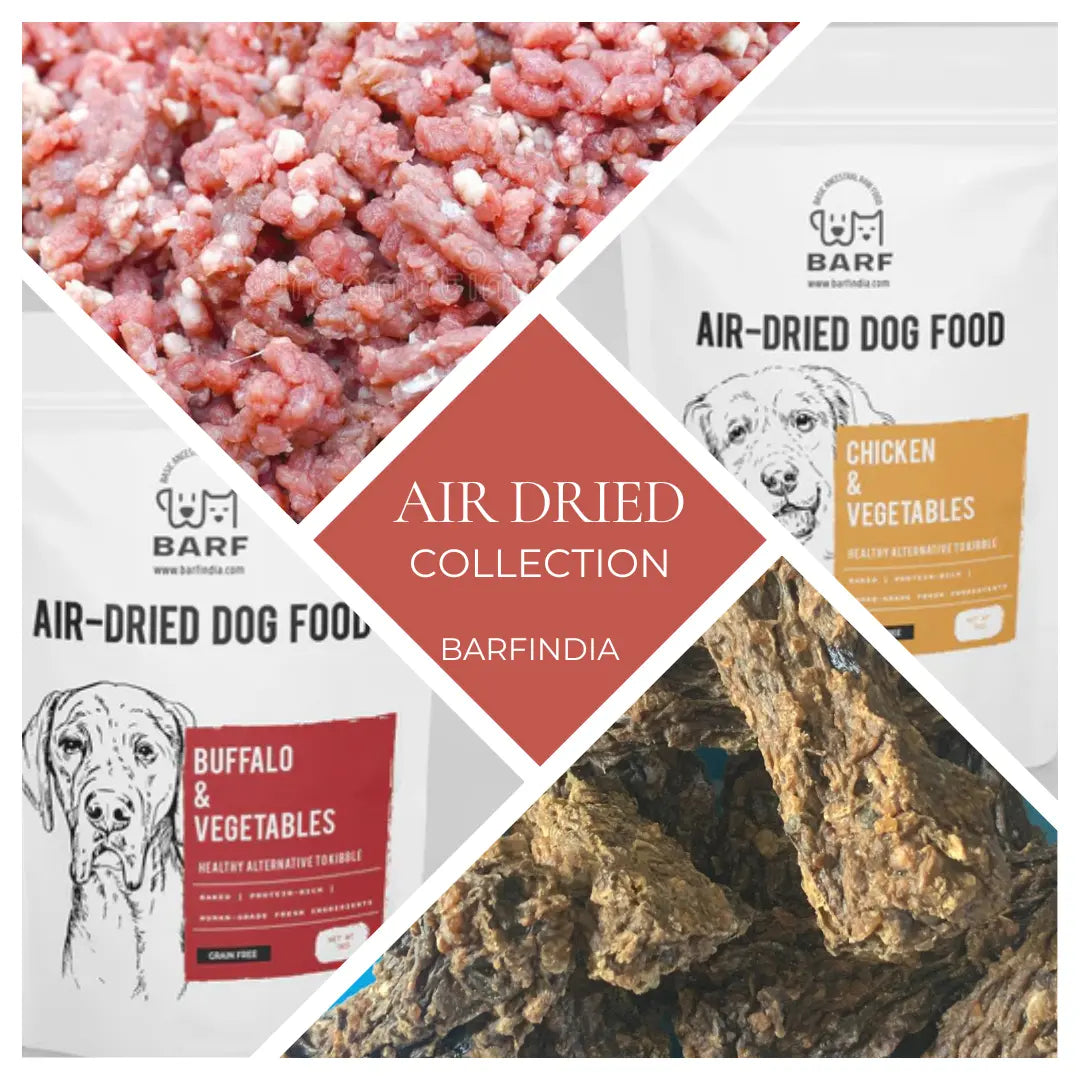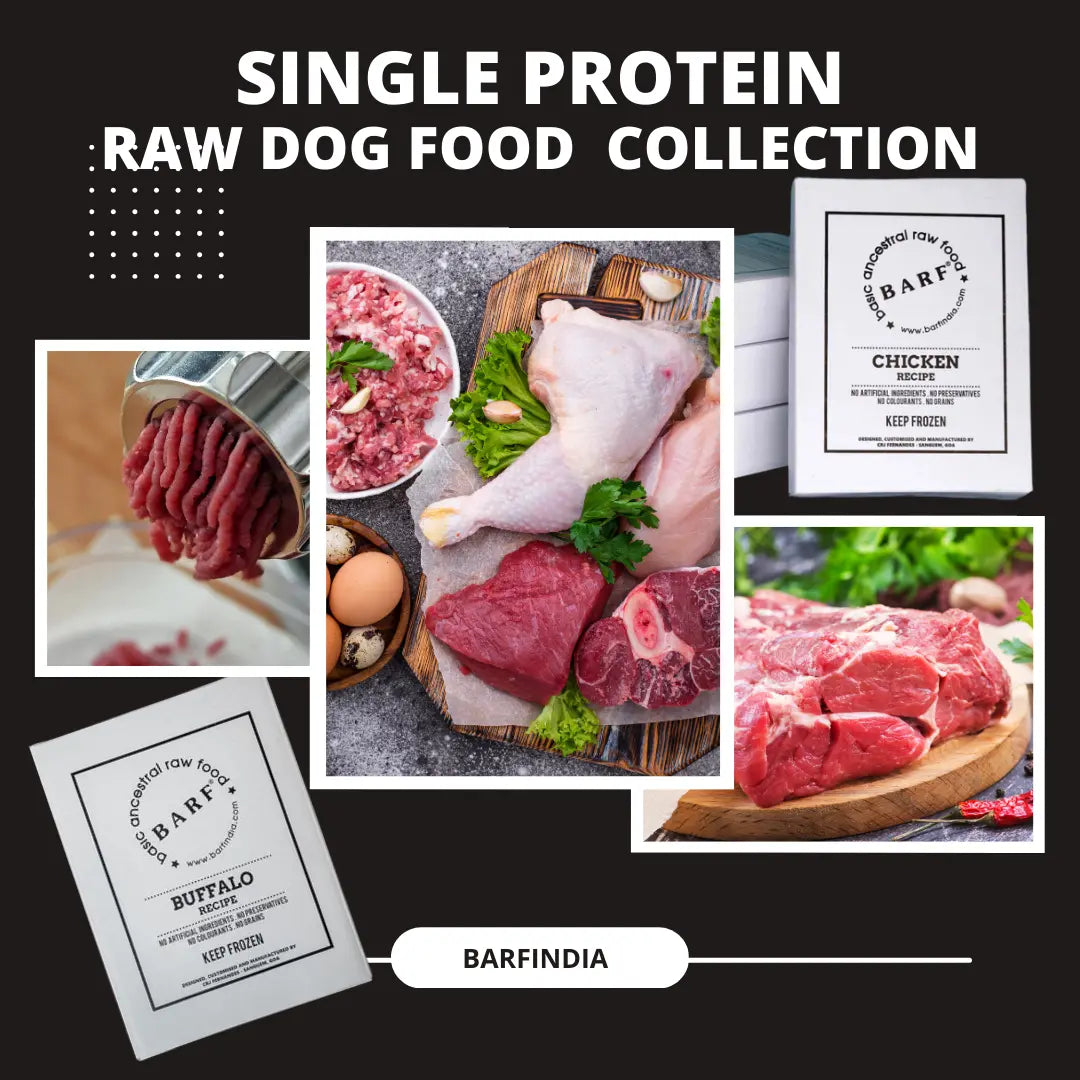
Raw diet and your dogs coat
B.A.R.F. India AdministratorAnd this is how a raw diet helps your dog’s skin.
Does your dog have dry, flay skin, with hair loss and accompanied by redness and inflammation? A poor skin condition in a dog is usually a result of an improper diet, one that lacks the right nutrition or appropriate supplements. The poor skin condition can manifest itself through a dull and lackluster coat, to flaky skin as well as constantly irritated skin, also known as skin allergies. A few of the common dog allergens are:
- Pollen, mold, dust, and dust mites
- Cigarette smoke
- Prescription medication
- Fleas and flea repellents
- Perfumes
- Chemicals
- Certain fabrics
- Certain foods
Whether your dog has allergies, has naturally dry skin and coat, or needs a nutritional boost, there are numerous ways you can help improve your dog’s skin and coat safely and naturally. Let’s begin by first looking at your dog’s diet. If your dog is eating a low-quality diet, one that lacks essential nutrients, then you should immediately take steps to correct that. You must switch your pet to a raw food diet or a homemade dog food diet. If you wish to retain your dog on kibble, make sure it is a high quality, grain-free variety. Ensure that there is no corn, poultry by-products, and artificial flavoring or colors present in the commercial food.
A dog requires omega fatty acids – essential fats – which its body cannot produce. These have to be derived from the food itself. Besides helping maintain healthy nerve function and building new cells, omega fatty acids are one of the primary elements that ensure thick, soft, luxurious fur and also help prevent dry and flaky skin. Omega fatty acids are simply great for dogs with allergies as they help soothe itchiness and act as an anti-inflammatory. Zinc is another essential mineral that is a critical component for your dog’s skin and coat health. If your dog has zinc deficiency it will be seen as cracked paw pads, severe hair loss, abrasions around the eyes, ears, and mouth, and a dry flaky, and thickened skin. Natural sources of zinc include red meat and bone, fish, egg yolk, spinach, flaxseed, chickpeas, and brown rice.
Raw diet and skin-care
If your dog tests positive for allergies, your vet might recommend you shift your fur companion to a raw diet immediately. Yes, raw dog food diets are still controversial. There are some who think that this is the right way for dogs to eat; others think that dry dog food is the correct diet for our four-legged fur friends. Let’s dig in a little deeper and understand what a raw diet really is like so you can take your own decisions. A raw dog food diet primarily comprises uncooked meat (often muscle and organ meat), whole or crushed bones, fruits, vegetables, raw eggs, and some dairy. The reasoning behind this is that dogs in the wild don’t have access to cooked food or kibble, and they have evolved over years to eat whole animals, along with the prey’s stomach content that included fruits and vegetables.
Raw, or BARF, diets were first proposed by Australian veterinarian Ian Billinghurst in 1993. BARF stands for Bones and Raw Food or Biologically Appropriate Raw Food.
How will your dog’s skin benefit from a raw food diet?
If your vet recommends a raw food diet for your dog’s allergies, it must have a basis for it, right? We must begin by understanding that most commercially prepared dry dog foods to come loaded with grains such as corn and wheat that are unnatural foods for dogs to eat. Dogs are by nature carnivores. They are not meant to consume grains, and when we compel them to eat grains through kibble or even lovingly-prepared home food, it causes a severe problem with their digestion and overall health, which then results in issues like skin problems. Rather than feeding a diet loaded with carbs, it is better to feed your dogs a protein-rich raw food diet. Switching to a raw food diet has been shown to take care of several health issues, including eliminating food and other allergies that can cause skin issues. Some of the most common benefits of switching to a raw food diet for dogs with allergies include:
- Raw food is easier for your dog to digest.
- The nutrients are absorbed and utilized more efficiently.
- A raw diet strengthens your dog’s immune system and helps fight off allergens.
- The live enzymes present in the raw food fortify the dog’s gut and the immune system.
- A natural, organic raw food diet contains no allergens and will not trigger allergies.
- There will be an improvement in all organ functions and joint movements along with an overall improvement in health.
- Your dog’s appearance will get better; you will notice whiter teeth, healthier skin, and a shinier coat.
Conclusion While there are numerous important benefits of shifting your dog to a raw diet, the first physical change that you will notice will be in its coat. Raw food is primarily protein, and up to 40% of the ingested protein will go into the skin and coat. On the flip side, a low meat protein, cereal-based diet (most kibble) does not have the required protein to help promote a healthy coat. Overall, raw dog food is high in fresh meat (protein) and fresh fat, which join forces to generate a luxurious, healthy coat on your dog.




